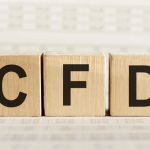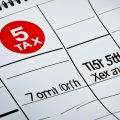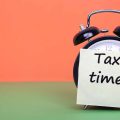Last Updated on: 26th July 2024, 09:30 am
Navigating the world of council tax can feel daunting, especially when trying to figure out how much is Council tax a month. Understanding your council tax payments is crucial for budgeting effectively and avoiding any surprises. Whether you’re a first-time homeowner or renting an apartment, knowing what influences these costs can help you make informed financial decisions. In this article, we’ll break down everything you need to know about council tax rates, bands, and potential discounts that might lighten your bill. Let’s dive in!
What Are Council Tax Rates?

Council tax rates are determined by local authorities based on the value of your property as assessed by the Valuation Office Agency (VOA). Properties are categorized into one of eight bands, from A to H, with Band A being the least expensive and Band H the most expensive. Your property’s band significantly influences your monthly council tax payments.
Local councils set their rates for each band, meaning similar properties in different areas may have varying rates. Local authorities review and adjust these rates annually to meet their budgetary needs and funding requirements. Additionally, local factors such as the level of community services and waste collection can impact these rates.
How Council Tax Bands Work?
Council Tax bands are based on property values as of April 1, 1991. Each band represents a range of values, which determines the rate of tax you pay. Here’s a breakdown of the bands:
- Band A: Up to £40,000
- Band B: £40,001 to £52,000
- Band C: £52,001 to £68,000
- Band D: £68,001 to £88,000
- Band E: £88,001 to £120,000
- Band F: £120,001 to £160,000
- Band G: £160,001 to £320,000
- Band H: Over £320,000
Each local authority sets its rates for these bands, so the same band can have different charges depending on where you live. Checking with your local council will give you the precise rate applicable to your area.
Factors Affecting Council Tax Rates
Several factors can influence your council tax payments:
- Local Budget Requirements: The financial needs of your local council for services such as waste collection, street maintenance, and public safety.
- Local Precepts: Additional charges from local organizations like police or fire services.
- Property Value and Band: Your property’s band determines the base rate of your council tax.
How Much is Council Tax a Month?
Council Tax is generally billed annually but can be paid in monthly installments. Most councils offer options to spread payments over 10 or 12 months. For example, if your annual Council Tax bill is £1,200, you might pay:
- £120 per month (over 10 months)
- £100 per month (over 12 months)
Monthly payments vary significantly based on your property band and local authority rates. Here are some illustrative monthly costs by band:
- Band A: £70 – £100
- Band B: £80 – £115
- Band C: £90 – £130
- Band D: £100 – £145
- Band E: £120 – £175
- Band F: £140 – £205
- Band G: £160 – £235
- Band H: £200 – £290
How to Find Your Exact Rate?

To find your exact council tax rate:
- Check Your Council Tax Bill: Your bill will detail the total due and installment amounts.
- Visit Your Local Council’s Website: Many councils provide online calculators or rate information.
- Contact Your Local Council: Contact your local council’s revenue department for personalised information.
Council Tax Discounts and Exemptions
You may be eligible for various discounts and exemptions that can reduce your council tax bill:
1. Single Person Discount: A 25% discount if you live alone.
2. Discounts for Certain Occupations: Members of the armed forces and some students may qualify for reductions.
Exemptions for Specific Circumstances:
1. Student Exemptions: Full-time students are often exempt.
2. Disability Exemptions: Properties adapted for disabled individuals may receive reductions.
3. Unoccupied Properties: Some unoccupied properties may be exempt under certain conditions.
Ways to Reduce Your Council Tax Bill

There are several strategies to potentially lower your council tax bill:
1. Challenge Your Council Tax Band: If you believe your property is incorrectly banded, you can appeal to the Valuation Office Agency. A successful appeal may reduce your bill.
2. Apply for Discounts and Exemptions: Ensure you apply for all eligible discounts or exemptions. Consult with your local council for application details.
3. Seek Financial Assistance: If you’re struggling with payments, consider Council Tax Support or alternative payment plans offered by your local council.
Conclusion
Understanding your council tax payment involves knowing your property band, local authority rates, and applicable discounts or exemptions. Typical annual payments range between £1,000 and £2,500, translating to about £83 to £208 per month. By familiarizing yourself with these factors and exploring ways to reduce your bill, you can manage your household budget more effectively. If you need more information or assistance, don’t hesitate to contact your local council. They can provide detailed guidance and support to help you meet your council tax obligations.




















No Comments
Leave a comment Cancel